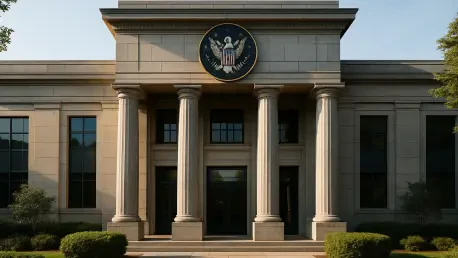In a nation where the shadows of organized crime and violence loom large, the Centro Nacional de Inteligencia (CNI), Mexico’s National Intelligence Center, stands as a critical line of defense. Established in 2018 under the administration of former President Andrés Manuel López Obrador, this agency replaced the Center for Investigation and National Security (CISEN) with a renewed mandate to protect national stability through strategic and tactical intelligence. Operating under the Secretariat of Safety and Civilian Protection (SSPC) with direct presidential oversight, the CNI is at the heart of Mexico’s efforts to address persistent security threats. Its creation represents not just a bureaucratic shift but a pivotal moment in the country’s long struggle to balance security imperatives with democratic values.
The importance of understanding the CNI lies in its role as both a guardian and a reflection of Mexico’s complex history with intelligence services. From precolonial espionage to modern-day operations against cartels, the evolution of Mexican intelligence reveals a recurring tension between state power and individual rights. As violence and transnational crime continue to challenge national stability, the agency’s effectiveness remains under intense scrutiny. This exploration delves into the CNI’s historical roots, operational framework, and the ethical dilemmas that shape its mission, offering a window into how Mexico navigates its security landscape. The story of this institution is one of ambition and reform, yet it is also marked by the weight of past abuses and ongoing uncertainties.
Historical Evolution of Mexican Intelligence
Early Beginnings and Political Control
The origins of intelligence in Mexico stretch back to precolonial times, long before the concept of a formal agency existed, when information gathering was a strategic tool for survival and dominance. During the Aztec era, merchants known as pochtecas served dual roles as traders and spies, collecting vital data for warfare and statecraft. This early form of espionage established a precedent where intelligence was intertwined with power, a theme that would echo through centuries. By the early 20th century, formalized structures emerged with the creation of the Confidential Department in 1929 under the Secretary of Interior. This entity focused primarily on internal surveillance, targeting political opponents and ensuring regime stability rather than addressing external threats. Such priorities reflected a governance model where intelligence was less about national security in the broader sense and more about consolidating control.
As the 20th century progressed, these early intelligence efforts evolved into more structured bodies like the Department of Political and Social Investigations (DIPS), later reorganized as the General Directorate of Political and Social Investigations (DGIPS). These agencies continued the inward focus, monitoring political dissent and foreign nationals, especially during global conflicts like World War II. However, the lack of oversight allowed unchecked power, often prioritizing the interests of the ruling elite over public welfare. This period set a troubling tone for Mexican intelligence, where secrecy and political manipulation became hallmarks. The legacy of these early systems would influence subsequent agencies, embedding a culture of control that proved difficult to dismantle even as reforms were later introduced.
The Dark Era of the DFS
The mid-20th century marked one of the most infamous chapters in Mexican intelligence history with the establishment of the Federal Directorate of Security (DFS) in 1948. Operating under the ruling Institutional Revolutionary Party (PRI), the DFS functioned as a de facto political police force, tasked with safeguarding national security but often serving as a tool for repression. Its targets included students, unions, journalists, and political activists, particularly during the volatile 1960s and 1970s, a period shaped by Cold War tensions and internal unrest. The agency’s involvement in the 1968 Tlatelolco massacre, where hundreds of student protesters were killed, stands as a grim testament to its methods. Beyond domestic suppression, the DFS was later implicated in ties to narcotrafficking, revealing deep corruption that undermined its stated purpose.
The downfall of the DFS came after decades of impunity, catalyzed by international pressure following high-profile incidents like the 1985 assassination of DEA agent Enrique Camarena, in which agency links to drug cartels were exposed. This scandal, alongside mounting evidence of human rights abuses, led to its dismantlement in 1985, along with the DGIPS, as part of a broader restructuring. The DFS era left an indelible mark on public perception, fostering deep mistrust in state intelligence bodies. Its legacy of overreach and ethical failures became a cautionary tale, prompting successive administrations to push for reforms aimed at aligning intelligence with democratic principles. Yet, the shadow of this dark period continues to influence how modern agencies are viewed, raising persistent questions about accountability and the potential for history to repeat itself.
Modernization and Challenges
From CISEN to CNI
The late 20th century ushered in a wave of reform for Mexican intelligence, beginning with the creation of the Center for Investigation and National Security (CISEN) in 1989. Designed to professionalize the field, CISEN operated under the Secretary of Interior with a focus on strategic analysis and national security, guided by the 2005 National Security Law. This legal framework outlined clear objectives, including threat assessment and inter-agency cooperation, aiming to distance intelligence from the repressive tactics of the past. With greater autonomy and budget oversight by the Treasury Secretary, CISEN represented a shift toward institutional accountability, seeking to rebuild trust in a system historically marred by abuse. Though not without flaws, it laid critical groundwork for a more structured approach to intelligence gathering and analysis.
By 2018, the need for further transformation led to the establishment of the CNI under the SSPC, reflecting a broader reorganization of security priorities under former President López Obrador. This transition placed intelligence directly under civilian protection efforts, with enhanced congressional oversight to ensure alignment with democratic norms. The CNI’s mandate expanded to include safeguarding state integrity and coordinating with bodies like the National Guard and Armed Forces. This structural evolution signifies an ongoing effort to adapt to Mexico’s complex security challenges, moving away from the political control of earlier agencies. However, the effectiveness of these changes remains a point of debate, as historical mistrust and contemporary issues continue to test the agency’s ability to operate transparently and efficiently in a volatile environment.
Current Operations and Ethical Dilemmas
Today, the CNI operates with an annual budget of approximately USD 160 million, tasked with addressing a spectrum of threats from organized crime to foreign interference. Its integration with entities such as the National Guard and the Attorney General’s Office underscores a collaborative approach, aiming to create a unified front against instability. Operational duties range from conducting socio-political studies to developing secure communication technologies, reflecting the multifaceted nature of modern security challenges. Recruitment, managed through the SSPC, is notably stringent, requiring candidates to meet criteria like Mexican citizenship, specific educational qualifications, and physical and psychological fitness, followed by a nine-month training program. These measures highlight a commitment to building a skilled workforce capable of navigating complex threats.
Despite these advancements, the CNI grapples with a legacy of ethical controversies that undermine public confidence. Recent allegations of Pegasus spyware use against journalists and human rights defenders, reported as late as 2022, echo historical abuses by predecessors like the DFS. Although official denials have been issued, such incidents fuel concerns about surveillance overreach and the erosion of civil liberties. The tension between security imperatives and individual rights remains a critical issue, as the agency’s operations are often shrouded in secrecy. This lack of transparency, coupled with Mexico’s escalating violence and homicide rates, raises questions about whether structural reforms alone can address deeper cultural and institutional challenges. The path to rebuilding trust requires not just operational success but a clear commitment to ethical standards.
Future Outlook
Adapting to New Threats
As Mexico faces an increasingly intricate security landscape, the CNI’s role in countering modern threats like cyberespionage and artificial intelligence-driven risks becomes paramount. Organized crime, particularly powerful cartels with vast economic and territorial influence, continues to drive violence, demanding actionable intelligence to disrupt their networks. Under President Claudia Sheinbaum’s administration, there are indications of intent to strengthen the agency’s capabilities and coordination with other security bodies. However, specific strategies for tackling these 21st-century challenges remain unclear, leaving a gap in public understanding of how the CNI plans to adapt. The absence of detailed policies on emerging digital threats suggests a potential lag in preparedness, even as the need for innovative approaches grows more urgent.
Beyond traditional crime, the rise of cyber threats and open-source intelligence (OSINT) presents uncharted territory for Mexican intelligence. The limited public data on how the CNI addresses these issues fuels skepticism about its readiness to navigate a rapidly evolving global security environment. While historical reforms have focused on curbing internal abuses, the future demands a pivot toward technological proficiency and international cooperation to counter transnational risks. The agency’s ability to balance these new priorities with its core mission of national stability will likely define its relevance in the coming years. As Mexico continues to grapple with both old and new dangers, the CNI stands at a crossroads, tasked with proving that it can evolve without repeating the mistakes of the past.
Building Trust and Accountability
The path forward for the CNI hinges on addressing the deep-seated mistrust rooted in decades of intelligence abuses. Historical events like the Tlatelolco massacre and more recent controversies involving surveillance technology highlight the ethical tightrope the agency must walk. Transparency remains a critical missing piece, as public access to information about operations and decision-making processes is often restricted. Establishing mechanisms for independent oversight and clear reporting could serve as vital steps toward rebuilding confidence among citizens. Without such measures, even successful operations risk being overshadowed by perceptions of secrecy or potential misuse of power, perpetuating a cycle of skepticism that hampers effectiveness.
Moreover, the CNI must prioritize cultural reform within its ranks to ensure that ethical considerations are embedded in its mission. Training programs and policies that emphasize civil liberties alongside security goals could help shift the institutional mindset away from historical patterns of overreach. Collaboration with civil society and international partners might also provide valuable perspectives on balancing state needs with individual rights. As the agency looks to strengthen its capabilities under current leadership, these efforts to foster accountability will be just as crucial as technological or operational upgrades. Only by confronting its past and committing to a transparent future can the CNI hope to secure both national safety and public trust in an era of unprecedented challenges.









